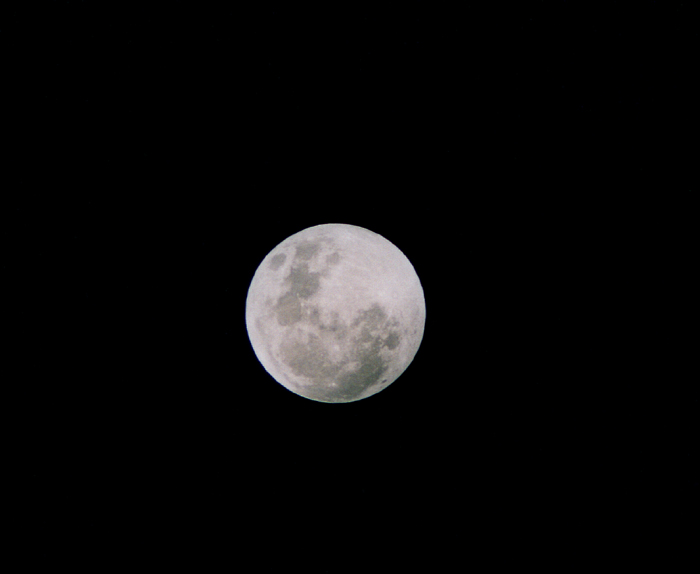
1/500 second exposure, Ektachrome 400 slide film.
5" f/5 refractor at prime focus.
The last total eclipse of the millenium, was almost the longest possible, one hour and 41 minutes of totallity! If only total SOLAR eclipses lasted this long!!! On this occassion the Moon passed through the very centre of the Earth's shadow, and there was considerable speculation as to how dark totality would be.
One minor technical difficulty with observing this eclipse was that July 17 was in the middle of the Western Australian winter. Although winters in WA are relatively mild and have a sizeable number of clear nights compared to other locations around the world, There was still a strong possibility of clouds that night. As it turned out, not only was the Perth sky studded with clouds, there was also a VERY strong wind blowing! To escape much of this bad weather, I travelled about 200km inland to the middle of the WA wheat-belt. This enabled me to escape the cloud, but unfortunately not the wind.
The first place I set up was in a hollow to get some shelter from the gale. However there was considerable moisture in the air, and as the wind blew over the hollow, this moisture kept condensing out in the form of very low clouds and mist. So, after putting up with this for about 15 minutes I hurriedly packed up the telescope, moon maps, tape recorder, short-wave radio, and miscellaneous other paraphenalia, and moved about 5 km to a location away from the hollow. Here the wind was a little stronger, but the sky was perfectly clear.
After timing the shadow across the moon, I settled down to enjoy totallity. As expected, the moon was very dark, although not as dark as in 1993. Also as expected, the shadow was very symmetric on the moon. This is well shown on the photographs taken around the middle of totality.
One thing I had not realised was just how long it would be, waiting for totallity to end! There was plenty of time for observing occultations, taking photographs and just enjoying the view. One thing I always enjoy, is the change in the sky. With having my eye glued to the telescope during the partial phases of the eclipse, it is quite a contrast to see just how much the sky has darkened. From around 3.5 before the eclipse, to around 6.8 during totallity! In adition to having time for photographing the moon, I also had sufficient time to take two long exposure, deep-sky photographs.
After timing the shadow across the moon during the final partial stages, it was around 3.00am, so rather than drive all the way home then, I just packed everything away and then streched out to sleep in the back of the van. When I awoke a few hours later, the rain was pouring down! A cold front that had been just off the coast during the evening had moved inland during the night. At least it waited until after the eclipse! When I arrived back in Perth, I found out that only a few glimpses of the eclipse had been possible through the cloud. So it was well worth the effort.

10 minutes prior to first contact. The moon is deep in the penumbra, as is evidenced by the darker hue on the right-hand side of the Moon.
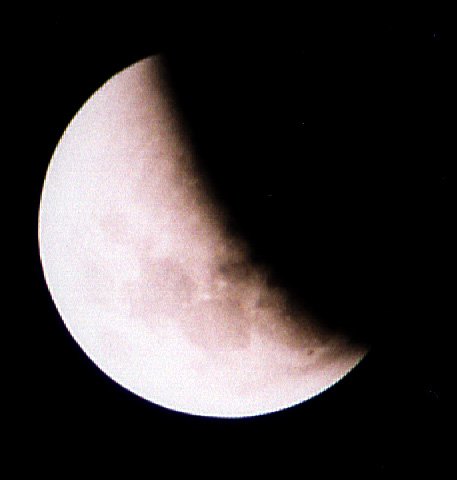
Almost half-way into the partial stage. This photograph was taken when I changed locations because of the winds and cloud. Just a quick snap before getting back to the crater timings!
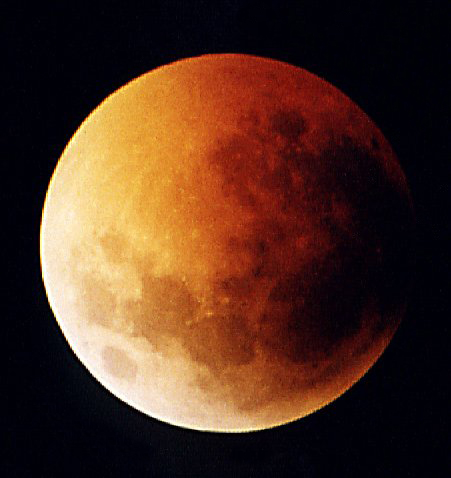
Just after totallity had started. Notice that the shadow is much brighter towards the edge. (left-hand side) This is the result of more light reaching that portion of the shadow.
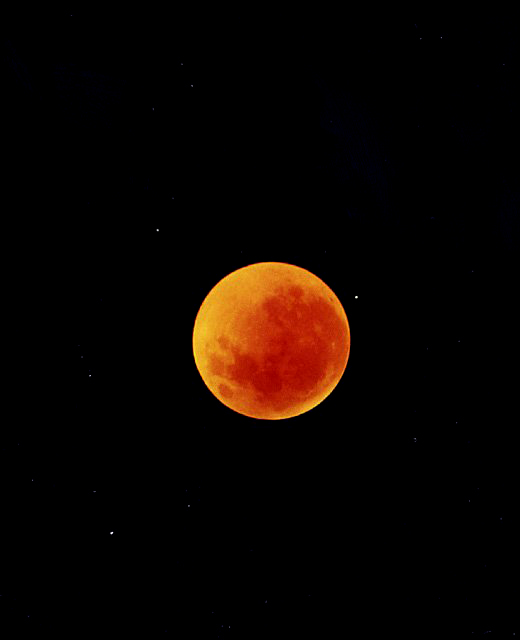
This image is taken about 20 minutes before mid-totallity. Notice that the left hand side of the Moon is still a little brighter than the right. Also notice the number of stars around the Moon, particularly on the right.
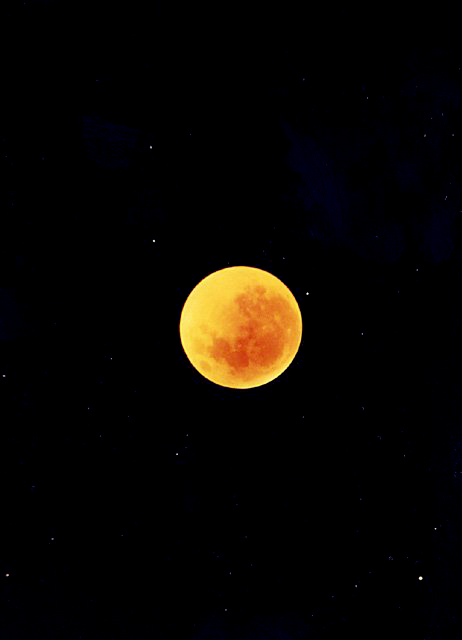
This image is taken about 20 minutes before mid-totallity.
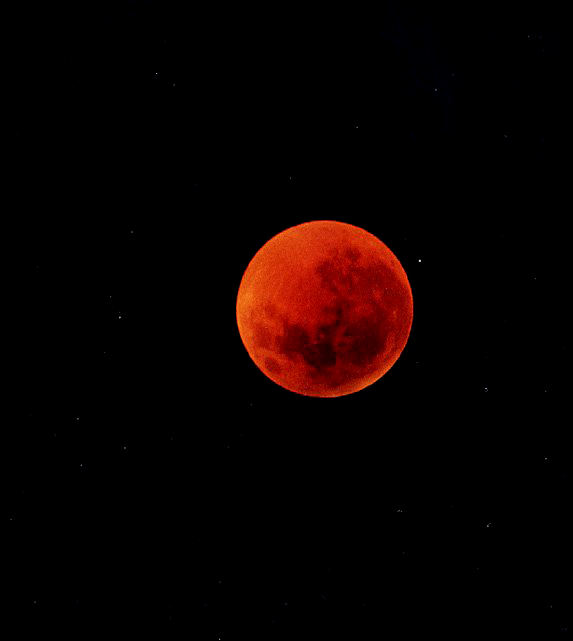
This image is taken about 20 minutes before mid-totallity.
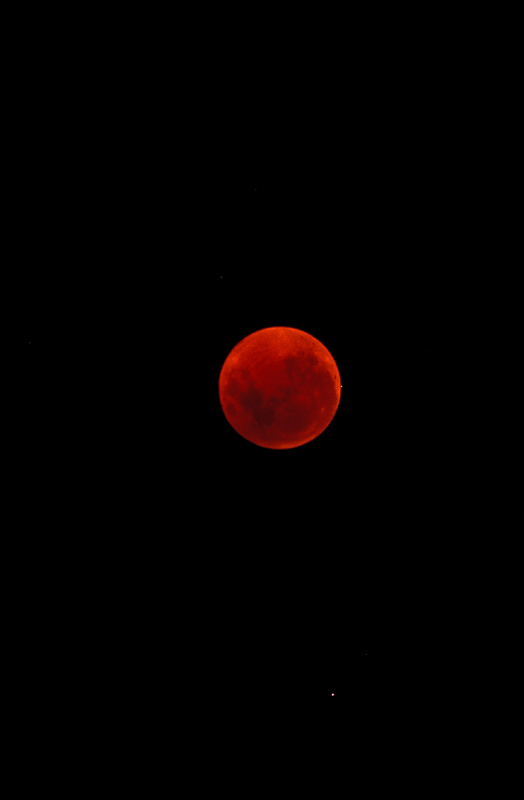
This image is close to mid-totallity. Notice how symmetrical the shadow now appears. Notice also that the bright star on the right of the Moon which is just about to disappear. This is the 6.8 magnitude SAO 188580.
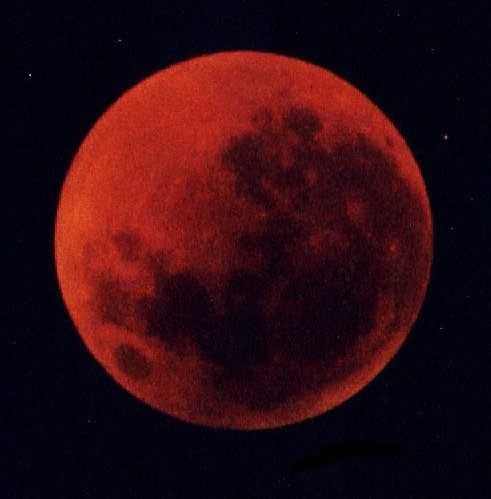
This image is taken 1 minute after the previous image. SAO 188580 has now disappeared behind the Moon.
During totallity there was plenty of time for taking deep-sky photographs. This one is a wide-angle image of the totally eclipsed Moon and the surrounding constellations. To the right of the Moon is the 'Tea-pot' of Sagittarius, while near the top of the image is the centre of the Milky Way. The cluster on the centre right of the image is M7. Above M7 is M6, while to the upper left are the Lagoon nebula (m8) and the Trifid neabula (m20). At the top is the Omega nebula (m17).
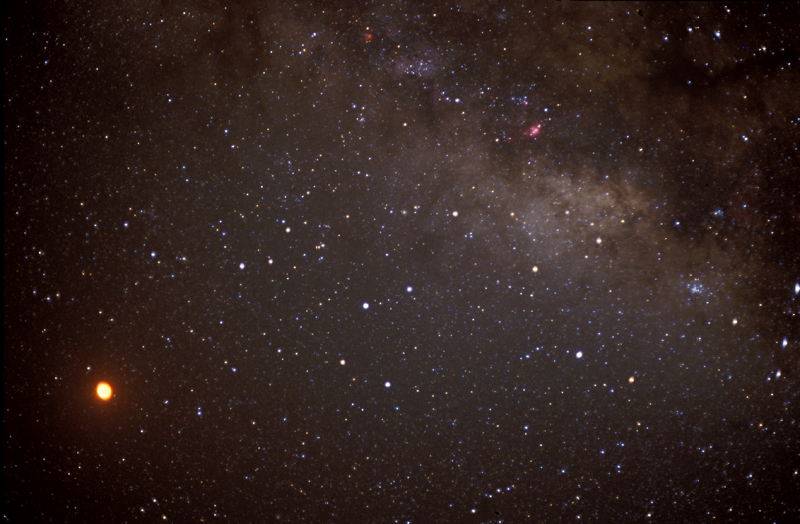
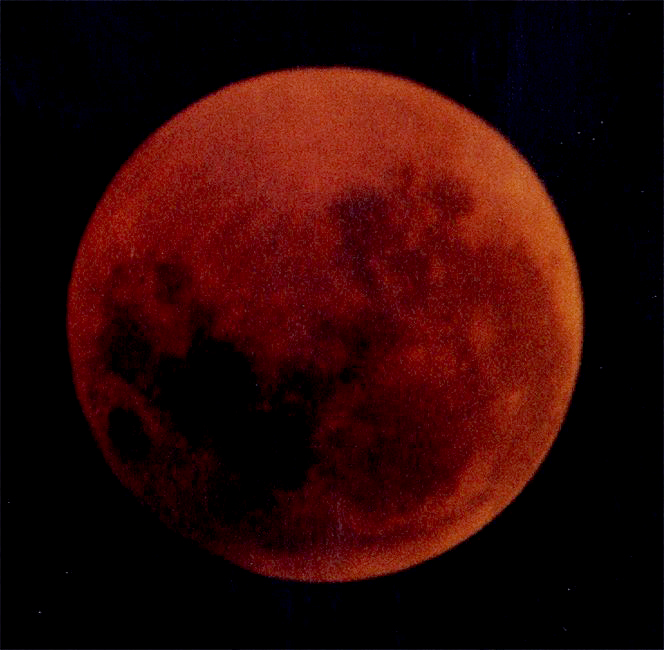
This image is taken about 15 minutes after mid-totallity. Notice now that the darkest portion of the shadow is now to the left of the Moon. Notice also that the bright stars that were on the right of the Moon have disappeared!
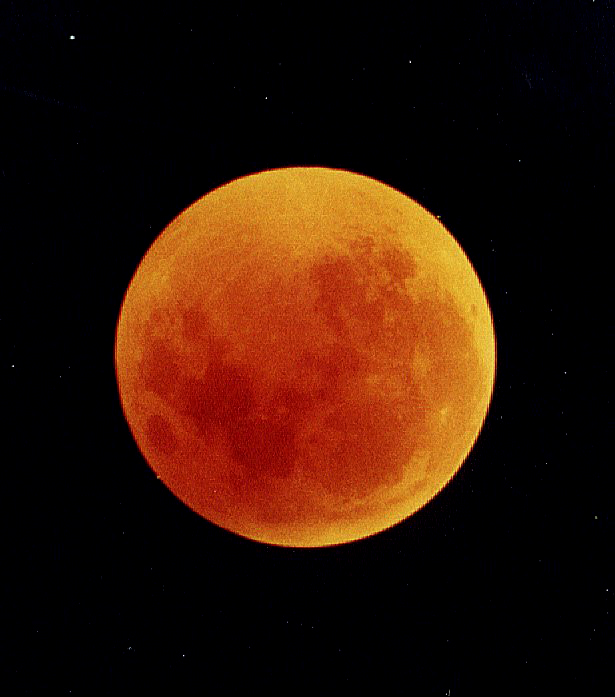
Notice the star about to disappear on the top right of the Moon. Also the star that has just reappeared on the bottom left!
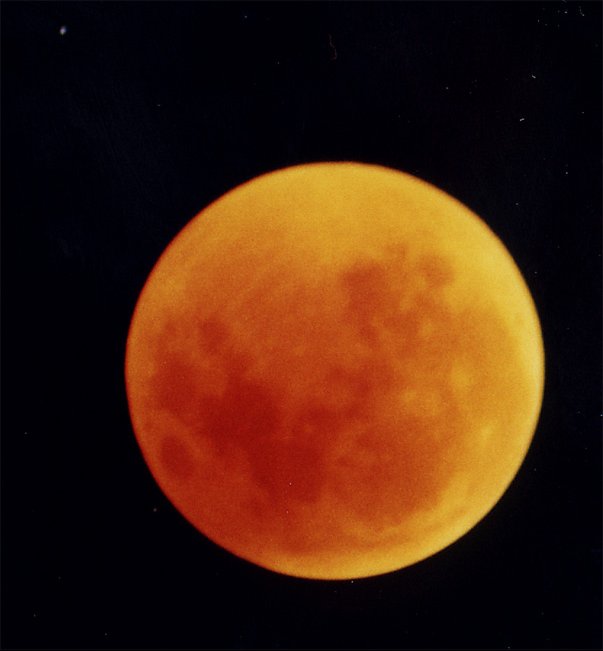
This image is taken about 5 minutes after the previous image. Notice how the star that was just on the bottom left edge of the Moon in the previous photograph is now some distance away!
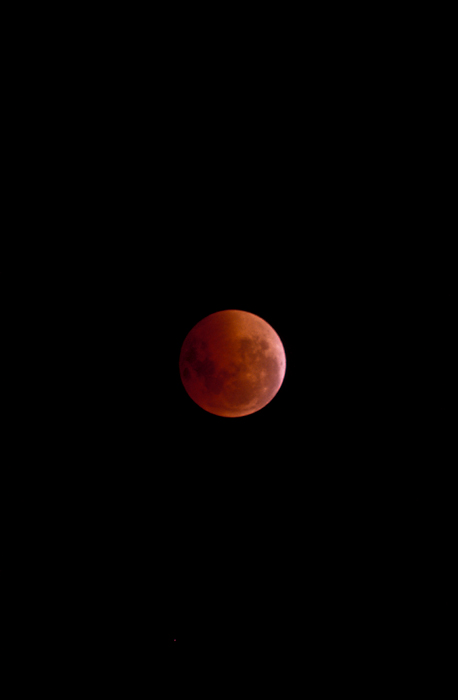
This image is taken about 15 minutes before the end of totallity. Notice how bright the right-hand side of the Moon is.
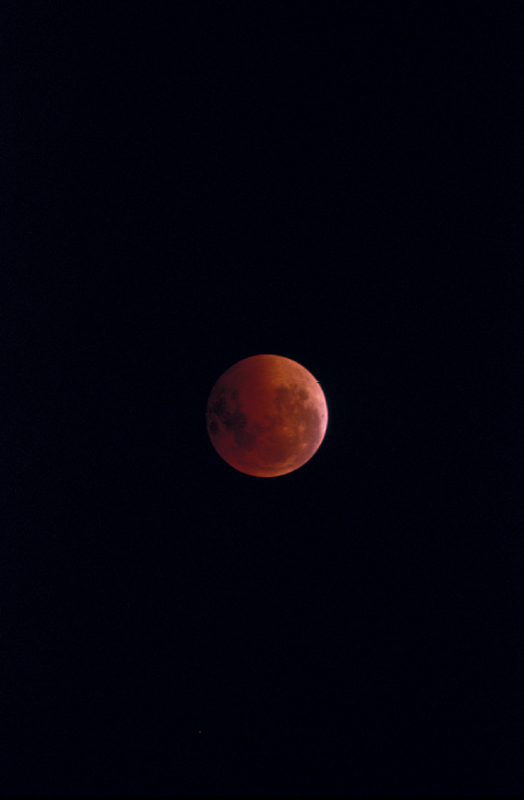
This image is taken about 10 minutes before the end of totallity.
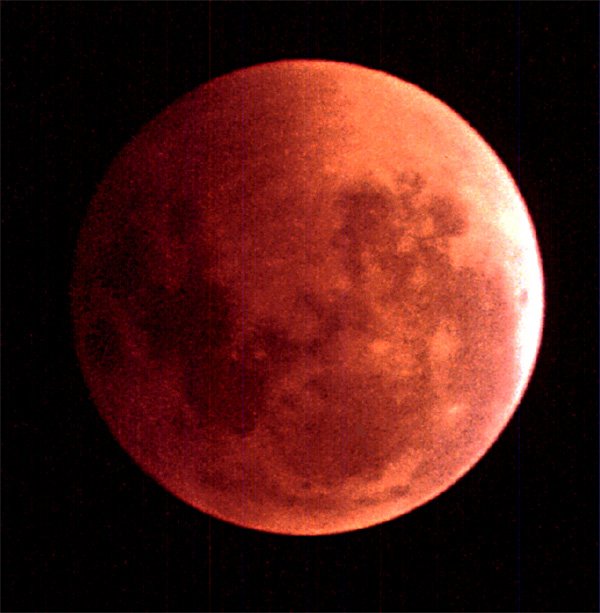
This image is taken about 3 minutes before the end of totallity. The eastern side of the Moon is now brightening rapidly.
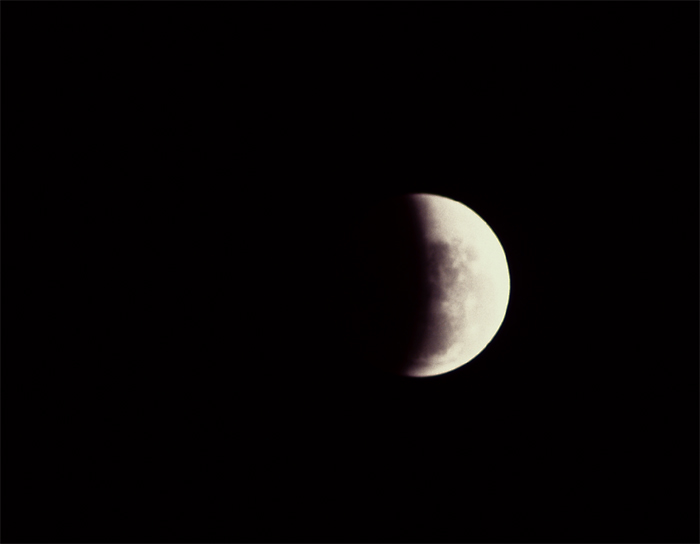
A quick pause in crater timing for a photograph about 20 minutes after totality ended.
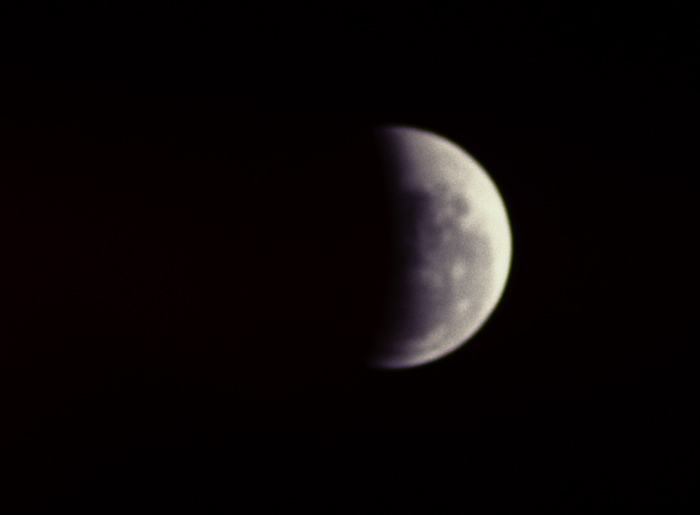
10 minutes later, another quick pause in crater timing for a photograph.
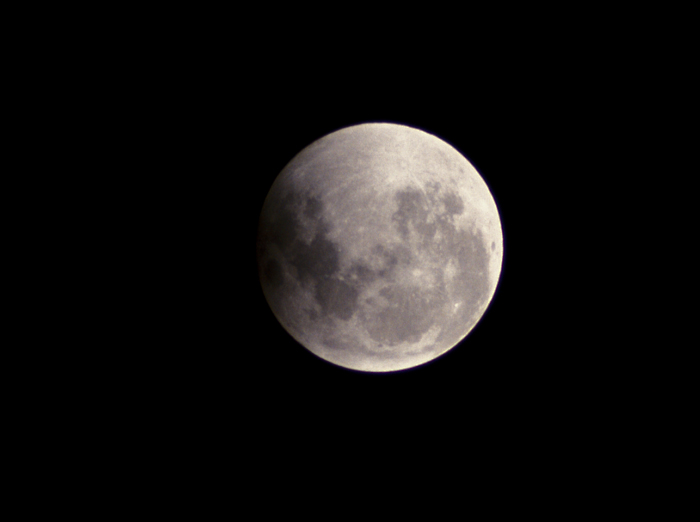
The partial stages are now over. However the western limb of the Moon remains fairly dark since it is still deep within the penumbra.